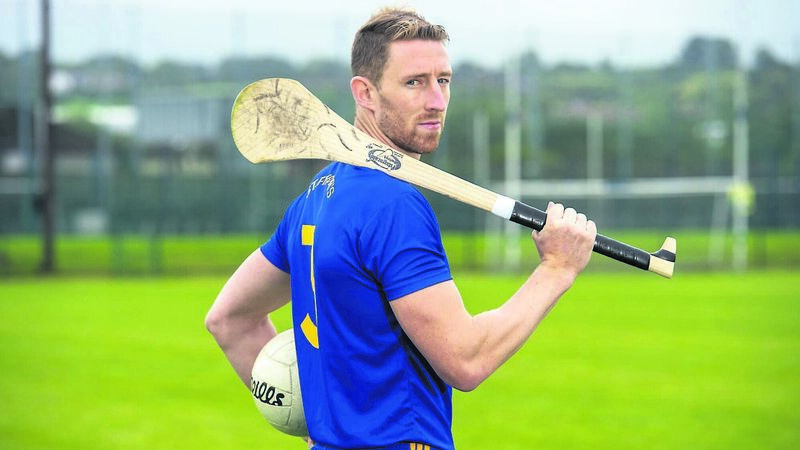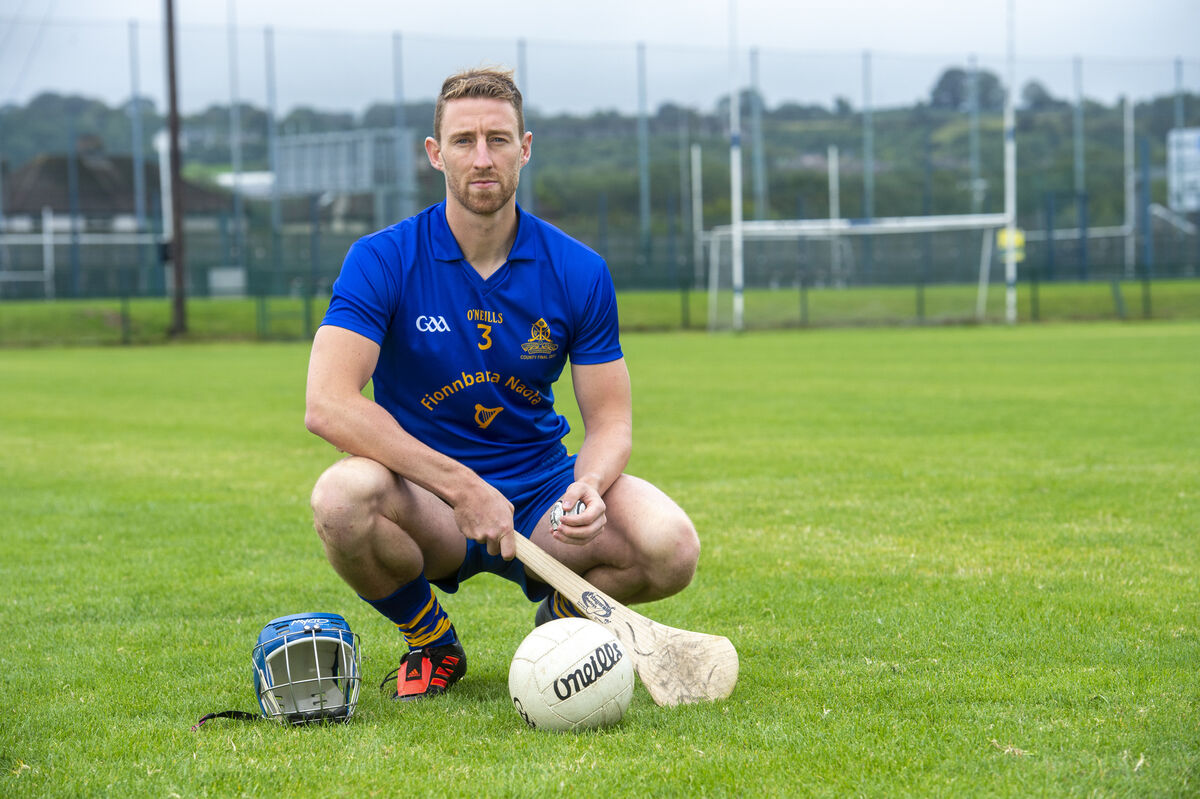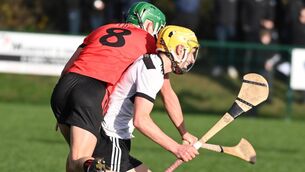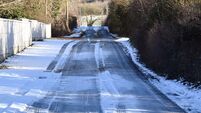Fighting on two fronts: Why GAA dual players need all the protection they can get

It was a tale of two reactions for St Finbarrs’ footballers last Saturday week. For those concentrating on the code, there was a pint and a pizza. For the dual players in the panel, it was the pool.
With the footballers’ next outing not until the middle of August, there was a chance to celebrate the six-point win over Ballincollig but the looming presence of Glen Rovers on Saturday made it impossible for Jamie Burns and the other 12 players who straddle both codes at senior level.
Not that they were feeling sorry for themselves. Burns, full-back on both teams, has never felt that. Besides, there is comfort in numbers. That baker’s dozen of dual men even have their own WhatsApp group.
“We would be on to each other a good bit on it, looking after each other,” says Burns. “You’d be advising some of the younger players who might have only played 10 minutes of a challenge game and there could be football training the next day.
It is incessant, he won’t deny that, and it will be the weekend of August 21 before there is some let-up but then the certainty of the fixtures is to be welcomed. “I would have been unhappy a few years back but with the new system where they kind of lay it out and give you the weekends definitively it helps. The most important thing is you’re given some break because it can be very hard.
“The footballers were able to go out and enjoy themselves that Saturday night and relax the Sunday whereas we were straight back into championship mode. In three weeks time though we can see that there is a break and once they are factored in you’re always happy.”
Winners of both Tipperary senior football and hurling championships in 2013 (14 SFCs and three SHCs), Loughmore-Castleiney have been a senior dual club since 1981. The guarantee fixtures list is a godsend for them too as they followed up an opening weekend hurling win over Moycarkey-Borris with a football victory against Moyne-Templetuohy this past Saturday, 1-17 to 0-13.

“A fixture list came out this year and all the dates are there whereas every other year you’re depending on what Tipp do in hurling and football,” says club chairman Eugene Stapleton.
“There might be a match fixed for July and it’s not played until September. With all the disarray this year, the one advantage is that the GAA calendar is laid out and it’s being followed.
“The one advantage is that we have the county lads both hurling and football when we would never have them at this time of year. The training is better, it’s faster. Everything is quicker when you have the county lads. We have three in the hurling panel (Noel, John and Brian McGrath) and two in the football (John Meagher and Joseph Nyland) and it makes a difference. The training is definitely better.”
What has also aided Loughmore-Castleiney was their decision in the early 2010s to appoint one management team to the senior footballers and hurlers. As Stapleton says, former manager Declan Laffan “had it down to a fine art”. Now Frankie McGrath is at the helm and the dynamic between the two teams is seamless.
“Before Declan, there was two managers and it was hard to work it so we decided at an AGM that the best thing was to see for a year if the same management could do both and would it make it easier.
“I think it would be impossible to go back to separate managers when there are so many playing both. It’s different in the city clubs like in Dublin where the hurlers wouldn’t even know the footballers. It can’t work having two managers.”
Having men like the McGrath brothers Noel, John and Brian helps - “They’re so loyal to the club. No matter what is going on with Tipp or how much they win with Tipp they’ll be the first lads in the field on training nights,” lauds Stapleton.
Needless to say, getting the balance right is essential for a dual club. Last Tuesday, football training in Loughmore-Castleiney began with some hurling. They would appreciate that in Togher too. “On a football week, you would have a hurley in the hand every day and puck against the wall,” says Burns. “I find the football that bit easier to come back to. You have to be that bit fitter for the football because it’s more of an athlete’s game.
“In fairness, the lads in the Barrs are on top of it and we’re going week-by-week. There’s an understanding between the managers. The tough sessions are done by the footballers when the hurlers are away and vice versa so you’re not really flahed. You’re looked after well.”
Keeping the load at a moderate level is essential, insists Joe O’Connor, strength and conditioning coach to Clare and Limerick’s All-Ireland winning teams in 2013 and ‘18 respectively. When it’s expected dual players are going to be fit, the key is to keep them ticking over.
“No one session is going to make you but one session could definitely break you. That’s the line I always used with players when they were juggling Sigerson or Fitzgibbon with U21 and club and county and two codes. Sometimes it’s better off just taking a night off. Like, how many times have we seen a fella twist an ankle, can’t train then come out with a man of the match performance? He hasn’t done what everyone else has done and it might indicate that what we’re doing is wrong.”
O’Connor reckons mingling the codes as opposed to playing championship in blocks as is being done in Waterford and Wexford is fairer on the dual player. “If you look at the reports, a lot of the injuries in football are non-contact. They’re soft tissue injuries like hamstrings and they can often come from excessive kicking so if somebody hasn’t kicked a ball in a long time that could be an issue.”

The former Kerry head of athletic development can’t stress enough the importance of games in and out of training. In that regard, dual players are well resourced. “With Limerick when we were looking at the round robin games in Munster it wasn’t that big a deal. It was just a matter of keeping it going because if we didn’t have a game we would probably be having an in-house game anyway
“I feel a lot of the structural adaptation that’s needed from a physiological point of view is looked after when you play the games. If I take agility training, for example, you have fellas running around fancy cones and poles but agility has to be reactive. If it doesn’t have an element of reaction time, it’s not agility, it’s pre-planned.
“If you can set it up something integrated to blindside a player to work on his agility, he doesn’t necessarily have to run 20 times around a cone that has that repeated, unnatural movement patterns. Whereas a player playing from eight years of age will have that natural movement patterns by playing the game.”
Playing both games from that age is all St Finbarr's Jamie Burns has ever known. “It’s something I have been doing since I was four or five. I never thought about doing one or the other. I’m delighted to pull on the jersey for both. We would never lean towards one more than the other.”
An endangered species that deserves all the protection they can get.










